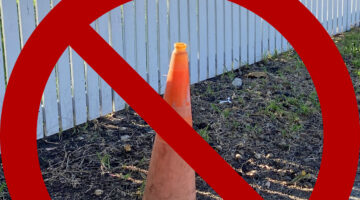Friday’s US jobs report for May likely to show steady gains
WASHINGTON (AP) — Exactly eight years after the Great Recession ended, the U.S. job market has settled into a sweet spot of steadily solid growth.
The 4.4 percent unemployment rate matches a decade low. Many people who had stopped looking for jobs are coming off the sidelines to find them. More part-timers are finding full-time work. About all that’s still missing is a broad acceleration in pay.
On Friday, when the government releases the jobs report for May, that pattern is likely to extend itself. The consensus expectation of economists is that the Labor Department will report that employers added 176,000 jobs, according to a survey by FactSet, a data provider. That’s right in line with the monthly average of 174,000 over the past three months.
All told, it’s evidence of an American economy that is running neither too hot nor too cold, with growth holding at a tepid but far from recessionary 2 percent annual rate. Few economists foresee another downturn looming, in part because the recovery from the recession has been steady but grinding, with little sign of the sort of overheated pressures that normally trigger a recession.
The jobs report will be released at 8:30 a.m. Eastern time.
Separate reports Thursday solidified expectations that job growth for May was healthy. Payroll processor ADP reported that in a private survey of companies, it found that a hefty 253,000 jobs were added in May, mostly among companies with fewer than 500 workers.
Nor are layoffs much of a concern. Weekly applications for unemployment benefits, which tend to reflect the pace of layoffs, averaged a low 238,000 over the past four weeks, according to the Labor Department.
The government’s monthly jobs report produces a net gain by estimating how many jobs were created and comparing that figure with how many it estimates were lost.
The unemployment rate is expected to have remained in May at 4.4 percent, a low figure that historically has reflected a healthy job market. If hiring maintains its current pace, it would exceed population growth, and the unemployment rate should eventually fall even further.
Mark Zandi, chief economist at Moody’s Analytics, estimates that monthly job growth above 80,000 or so should cause the unemployment rate to fall.
“I think 4 percent unemployment is dead-ahead, and we’ll probably go past that,” he said.
Still, the jobs report produces several different measures of unemployment, and the broadest gauge might be most critical to watch Friday. This particular measure includes not only the officially unemployed but also part-time workers who would prefer full-time jobs and people who want a job but aren’t actively looking for one and so aren’t counted as unemployed.
Known as the “U-6” rate, this measure is one of the favorite metrics for Trump administration officials. The U-6 has plunged since January to 8.6 percent in April, a 0.8 point decline.
The decline in that measure is an encouraging sign that jobless people who had given up hope of working are now being hired. If that trend continued in May, a falling U-6 would point to a strengthening economy despite weak growth during the first three months of the year.
But the influx of job seekers can also inflict a drag on pay growth. As more people start seeking jobs, employers begin to have less incentive to raise pay. It’s only when employers face a shallow pool of job applicants that they tend to feel compelled to raise pay in hopes of hiring people who fit their needs.
Annual growth in average hourly earnings was a so-so 2.6 percent in April. And whatever meaningful pay raises that exist are going disproportionately to managers and supervisors. For workers who aren’t supervisors, average hourly pay has risen just 2.3 percent. In a healthy economy, average pay gains would typically grow roughly 3.5 percent a year.
Of the 211,000 jobs added in April, more than a quarter were in the generally lower-paying leisure and hospitality industry — hotels, restaurants and amusement parks. Health care and social assistance added nearly 37,000 jobs and professional services 39,000.
The Trump administration has designated the pace of hiring for good-paying skilled jobs in construction, manufacturing and mining as among the key categories it monitors for economic health. Those three sectors were relatively weak in April.
The construction sector added just 5,000 jobs in April and 1,000 jobs in March. A rebound could occur in May because construction activity has been improving. The government has reported that housing starts are up 5.3 percent year-to-date, while construction spending has risen 5.8 percent year-to-date.






No Comment